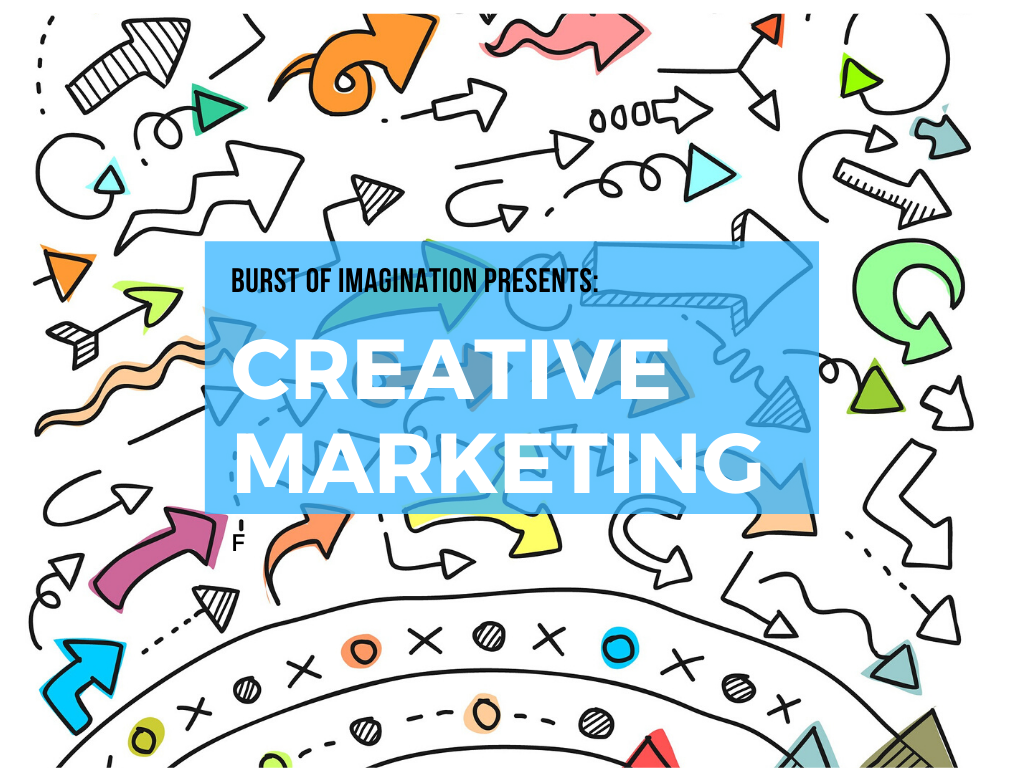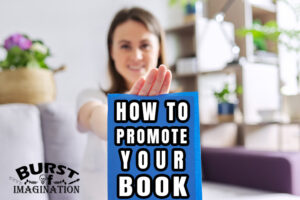Creative Marketing

The Greatest Sin in Today’s Digital World
The greatest sin in today’s digital world is being boring. Attention has become a currency and those who know how to gain it and keep it can take that talent all the way to the bank. This makes creative marketing essential for success.
In a world with memes, hashtags, grumpy cats, and tweeting presidents, we can no longer assume because we have a platform that we will have attention. Join us for our creative marketing series. We will look at some of the best ways for creatives to engage audiences.
Introducing the Hook
As entrepreneurs and artists, trying to share our trades can feel like filling up a pool using a bucket with a hole in it. We pour ourselves out with very little reward for our efforts.
Our goal at Burst of Imagination is to help creatives share your trades more effectively. Even in my experience as a corporate trainer for Cigna, where we are literally paying people to attend training, I can still struggle with fully capturing my audience. The solution is the almighty hook.

The hook is a term for that thing that will grab and keep your audience. In marketing, the goal of your headline is to stop the reader in their tracks and get them to read your first sentence. The goal of your first sentence is to get them to read the second sentence and so on.
Every piece of content, advertisement, video or article you deliver needs a hook. This is also called a pattern interrupt because we are disrupting someone’s normal scrolling behavior to draw their attention to something specific.
Is your hook strong enough to stop someone mid scroll? The best hook connects with our audience’s current desires and goals.
Intentional Creative Marketing
Before defining your hook, you should have in mind what you’re fishing for. Is your goal to increase brand awareness? Do you want to get more sales? Are you working on building your following? Your goal should be directly tied to the phase of your sales funnel you are targeting.
Marketing is basically a relationship-building exercise. You build a relationship with continued exposure over time. Many businesses make the mistake of selling too soon.
Trying to sell something too early in the relationship is equal to going on a first date and asking your date what you want to name your kids. You haven’t earned that trust or commitment yet.
Top of Funnel
This early phase of the relationship is often referred to as the top of the funnel. In this stage, you are just meeting your potential customers for the first time and you’re really just giving an introduction. “Hi! How are you?” You absolutely must not sell in this stage.
Your top of the funnel goal is simply providing value. What can you offer your customers at this stage that will delight them? Maybe you’re giving a template they can use to make a task easier. It could be that you’re giving your first 5 chapters away free. Or maybe you’re sharing a lesson that you learned.
Middle of Funnel
The middle of the funnel is for customers who know your brand. This is similar to your 2nd or 3rd date. Your customer has come back for more. This is the time to ask for a micro commitment. The goal is to take the relationship to the next level.
Your goal here is still to provide value but to also ask for something that has a low barrier for entry. Examples of micro-commitments include signing up for your email list, attending a free training you are hosting, or a very small purchase.
Bottom of Funnel
The bottom of your sales funnel is dedicated to customers who know and like you. You’ve already invested in the relationship and your audience has shown their interest.
This is the time to make your offer. You are expected to sell at this point in the relationship.
Choosing Your Hook
Now that you know your audience it’s time to consider your hook. In a book, if you don’t have a fantastic first chapter, then you don’t sell your book. And if you don’t have a satisfying ending, then you won’t sell future books. We always want to keep them coming back for more.
What is that thing that will steal the imagination of your audience and keep them coming back? In training, we might start off with a true story or a startling fact. Did you know that only 10% of those of you reading this article will remain cancer-free for the rest of your life? Don’t panic, I made that up, but it’s startling, right?
3 Marketing Hooks
Here are a few hooks for you to try out in either your marketing or your content creation depending on your target audience:
1.The Pain Point Hook
The beauty in this hook is you are highlighting a problem your audience is currently experiencing that the content you’re going to share will solve. Example – “Do you ever feel that what you have to say isn’t new or unique?”
Key points:
- The pain should be frustrating to your ideal customers.
- Tie your question to match what you do. This will help you attract the customers that are a great fit for you.
- This works great for selling products or services.
2.The Story Hook
Start at the most compelling point of a story. The main issue with this is that sometimes you get the attention of people who just like a good story, but aren’t a good fit for your brand.
Example – “We were woken up by a very loud beating on our door at 3 am. Our car was about to get repossessed. And it was only 7 days away from our wedding.”
Key points:
- Only use this hook in places where you know your perfect customers actually hang out.
- Limit using this in an ad since it might attract customers who just enjoy the story, but aren’t actually interested in your brand. You can minimize this risk by having hyper-targeted ads for warm audiences.
- This works great for building a brand or authority.
3.The Headline Hook
This hook ties into a big current news headline or something slightly controversial for your ideal customer.
Example – “What Trump’s Impeachment means for online content creators.”
Key points:
- You don’t want to just call out the big news right away. You must tie it into the thing that you help people with.
- This one also carries the risk of attracting people who aren’t ideal customers.
- This works great for brand building and building a connection with your audience.
Join us next week as we continue to dive into hooks and how they can be leveraged to connect with your audience. We will be exploring 12 elements of highly effective hooks.


